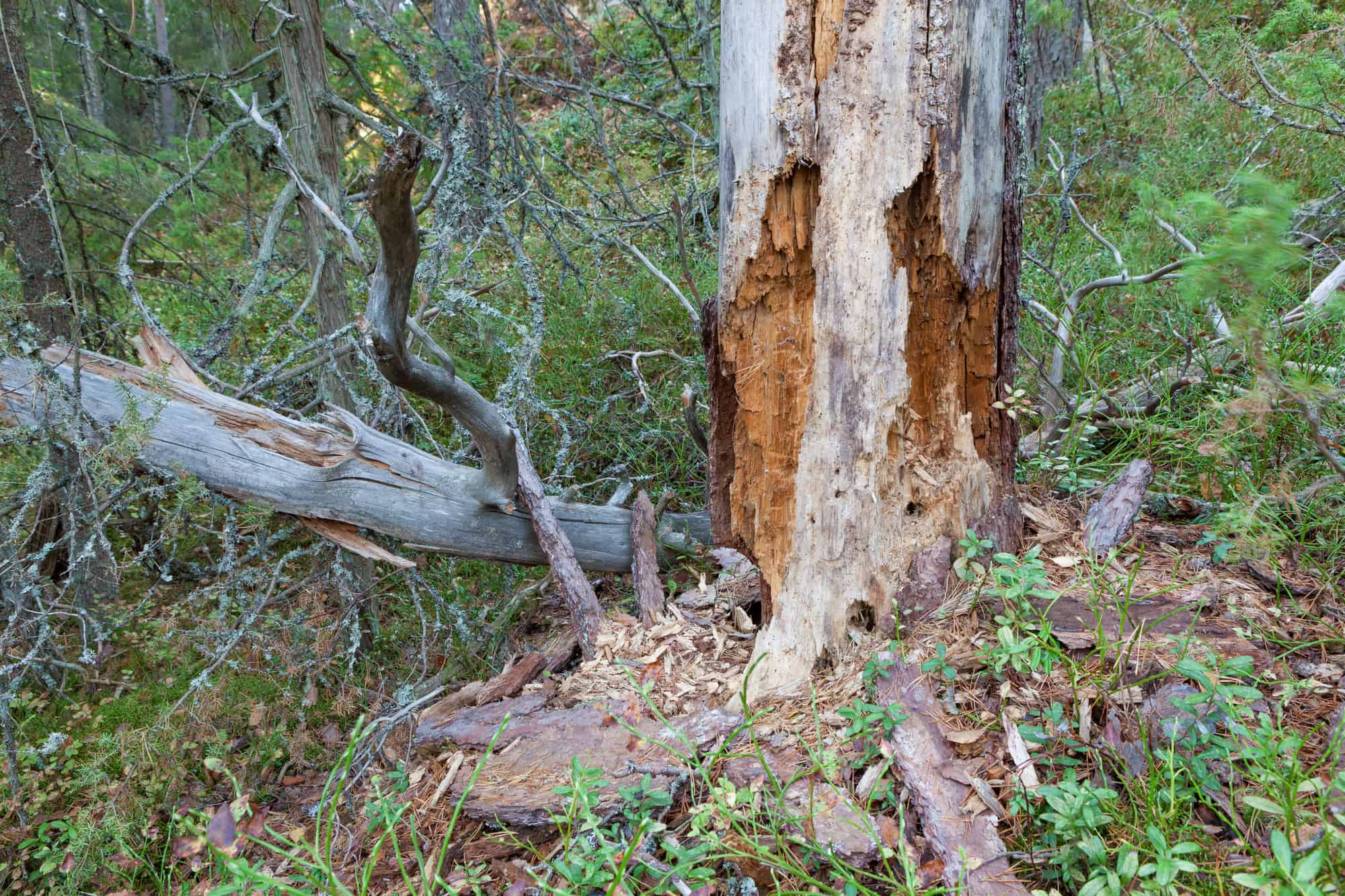7 Signs of a Dying Tree You Shouldn’t Ignore

7 Signs of a Dying Tree You Shouldn’t Ignore
If you don’t routinely check your tree for disease, you may be missing signs of a dying tree.
While some tree diseases are obvious, others are less noticeable and go untreated by their caregivers. This is unfortunate because the tree ultimately ends up dead.
We’re here to help prevent that from happening by providing you with a list of the 7 signs of a dying tree you shouldn’t ignore. Continue reading to learn more about how to save your tree.
1. Brittle Branches or Fallen Sticks
Fallen sticks and dead tree branches happen with all trees, and it’s not always a cause for concern. A healthy tree will have branches and twigs that have a slight bend to them. This flexibility means that they are healthy and won’t break off.
An unhealthy or dying tree will not be as well hydrated. It will have branches that snap and fall off.
Keep an eye out for these brittle branches. Signs of a dead tree include one that has falling tree branches and dead sticks.
2. Peeling Bark or Cracking Wood
A healthy tree has strong, well-attached bark. If you see a tree with bark that’s peeling or flaking, it is likely a sign of a sick tree.
Flaking bark is a sign of an underlying disease. It can also be a sign of temperature changes if accompanied by splitting wood.
An unhealthy section of wood will heat or cool at a different rate than a healthy section of wood. When the temperature changes, such as with an overnight freeze, the wood could split.
A good test to check the health of the tree is to look under the bark. A healthy tree will have a layer of green underneath to signify that it’s getting the nutrients it needs. If there is no green layer, the tree is dying.
3. Visible Disease
Some signs of a dying tree are more visible than others such as tree rot or fungus.
Tree rot can appear in a few different ways. Some of the more common appearances include mushroom-like growths on the trunk of the tree, discoloration to the bark, or unusual growths or scabs.
Tree rot and fungus occur rapidly. You can see evidence of either in a few days after they set in. While it’s possible to save these trees if you act quickly, some may be too far gone if treatment is delayed.
Tree rot and fungus happen for a variety of reasons, such as injury to the tree or weakness in the bark. Once it surpasses the bark, the disease kills the tree from the inside out.
4. Open Wounds
Accidents happen, but uncareful cuts and splits in a tree can have a negative impact on your trees. Open trunk wounds can lead to the illness and death of your tree.
These bigger cuts or torn branches are difficult to recover from compared to those made when tree trimming. Tree trimming uses careful, intentional cuts that the tree can easily heal from.
Routine tree trimming is beneficial for your tree as it can help improve the strength of young trees and remove weakening branches that may lead to disease.
Open wounds are problematic for a number of reasons. They expose the food and water tissues of the tree, leaving them vulnerable to disease and fungus. They also cause structural weakness.
5. Wilting Leaves or No Growth
While plenty of trees lose their foliage in winter, if a tree is barren when it shouldn’t be, this is a sign of a dead or dying tree.
In some cases, only part of the tree will be missing leaves. In other instances, the entire tree will be bare.
If only a portion of the tree is not producing leaves, it could be a sign of damage to the roots or the presence of pests.
Most instances of this are irreversible, and the tree cannot be saved.
6. Presence of Pests
Many types of pests are detrimental to the life of your tree. As mentioned above, a barren tree can be evidence that pests are attacking the tree. However, keep in mind that most pests are present because a tree is already dying.
For example, carpenter ants live in trees that are already dying or are under too much stress. Similarly, termites, which eat wood as their main food source, tend only to focus on dry and dying wood. If caught early enough, you may be able to save the tree.
However, keep an eye on the structural integrity of the tree. If it is not stable, it is too far gone. This is when to remove a tree before it falls on its own.
7. Uprooting or Leaning
A healthy tree has roots planted firmly in the ground and stands upright toward the sky. Uprooting or leaning are signs of a dying tree.
When the root system dies, it is no longer fixed into the dirt below. You may see the cracking of the surrounding dirt or notice a sudden or gradual leaning of the tree.
In these instances, the tree is typically already dead, and it’s time to remove the tree for safety.
Saving a Dying Tree
If you are concerned and are noticing signs of a sick tree, you might be able to save it if you act quickly. Start with a visual inspection of the tree for any obvious signs of disease or illness.
If you see any of the signs above, we recommend calling in a specialist to help you with proper treatment. Some symptoms are less obvious than others, and you don’t want to treat your tree with something it doesn’t need.
Sometimes, however, a tree is too far gone and it’s important to know when to remove a tree so that it doesn’t hurt anyone or cause damage to surrounding trees.
Watch Out for Signs of a Dying Tree
Now that we’ve discussed some of the common signs of a dying tree, it’s important to routinely check your trees for signs of illness like dead tree branches and fungus.
Some symptoms are obvious and can be addressed if the tree is frequently monitored. However, it’s important to know when to remove a tree that is dead and can’t be saved.
However, don’t hesitate to call an expert for help if you aren’t sure what the problem is.
Visit our blog for more on trees and general maintenance tips.



You must be logged in to post a comment.